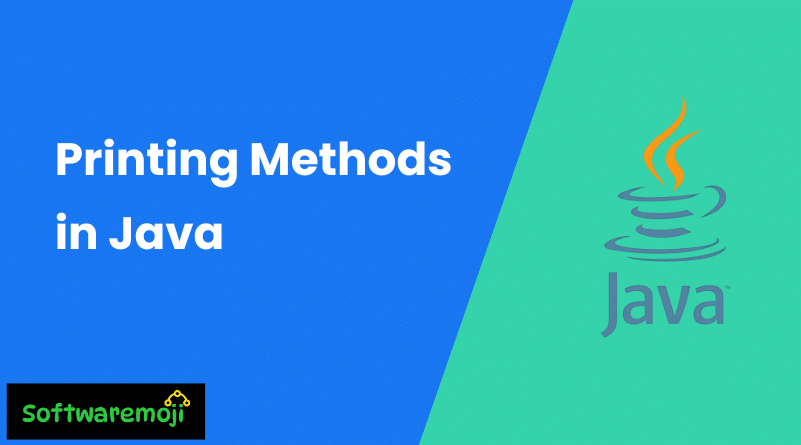
👉How to Printing in Java:
- Java provides simple and efficient ways to print text, variables, and formatted data for debugging and user interaction.
- The
System.out.println()method in Java automatically adds a new line after printing, making output more readable. - Formatted printing in Java can be achieved using
System.out.printf()orString.format()for displaying values with precision. - Java supports printing different data types such as integers, strings, characters, and floating-point numbers with ease.
- Understanding how to use print statements in Java is crucial for beginners learning core Java programming.
- Java’s print methods are essential tools for debugging code and tracking program flow during development.
- Advanced Java printing includes file printing and using the Java Print Service API for real-world applications.
- Java printing techniques enhance user experience in console-based applications by providing meaningful outputs.
- Learning how to print in Java lays a strong foundation for mastering Java I/O and stream handling.
Printing output in Java is an essential aspect of programming, whether for debugging, displaying results, or formatting console output. Java provides multiple methods to print content efficiently, catering to different formatting needs.
How to Install Java on Ubuntu (Linux) :-
👉Why Java Printing Methods Matter for Programming?
- Efficiency: Choosing the right printing method improves readability and debugging.
- User Experience: Proper formatting enhances clarity for users.
- Optimization: High-quality, well-structured content ranks better in search engines when explaining coding concepts.
👉Different Methods to Print in Java:-
1. Java print() Method:-
The print() method prints content on the same line. It belongs to the PrintStream class and does not move the cursor to a new line after execution.
Syntax:
java
System.out.print("Hello, Java!");
Example Output:
plaintextHello, Java!
This method is ideal for printing output in a continuous flow without breaking into new lines.
2. Java println() Method:-
The println() method functions similarly to print(), but it moves the cursor to a new line after printing the content.
Syntax:
javaSystem.out.println("Welcome to Java Programming!");
Example Output:
plaintextWelcome to Java Programming!
This method is preferred when you want outputs to appear in separate lines for better readability.
3. Java printf() Method:-
The printf() method allows formatted output using format specifiers. It is useful for displaying structured data with specific formatting.
Syntax:
javaSystem.out.printf("Hello, %s! Today is %s.", "John", "Monday");
Example Output:
plaintextHello, John! Today is Monday.
👉Common Format Specifiers:-
| Specifier | Description | Example |
|---|---|---|
| %d | Integer | System.out.printf("%d", 100); |
| %f | Floating Point | System.out.printf("%.2f", 3.1415); |
| %s | String | System.out.printf("%s", "Java"); |
| %c | Character | System.out.printf("%c", 'A'); |
4.How to Printing in Java Printing User Input in Java:-
Java allows users to enter data via the Scanner class and print it dynamically.
Example: Accepting and Printing User Input:
javaimport java.util.Scanner;
public class UserInputExample {
public static void main(String[] args) {
Scanner scanner = new Scanner(System.in);
System.out.print("Enter your name: ");
String name = scanner.nextLine();
System.out.println("Welcome, " + name + "!");
}
}
Example Output:
plaintextEnter your name: Alex
Welcome, Alex!
This method is useful for interactive console-based applications.
👉How to Printing in Java Comparison of Java Print Methods:-
| Method | Moves Cursor to Next Line? | Supports Formatting? | Use Case |
|---|---|---|---|
print() | No | No | Continuous output on the same line |
println() | Yes | No | Prints each statement on a new line |
printf() | No | Yes | Formatted output for structured data |
👉 How to Printing in Java Java Print Methods:-
- Use structured data tables for better ranking in search engines.
- Include code examples with formatted syntax highlighting for readability.
- Answer related search queries like “How to print in Java?” or “Difference between print and println in Java?” for enhanced discoverability.
- Utilize proper headings (H1, H2, H3) to improve content hierarchy.
- Add alt text to images (if any) explaining Java concepts for better accessibility.
👉How to Printing in Java Final Thoughts:-
Understanding Java’s print methods is essential for efficient programming. Whether you need continuous output, formatted results, or user inputs, Java provides various methods to suit different requirements. By implementing these methods effectively and optimizing content for developers can enhance their coding experience and improve content visibility online.
